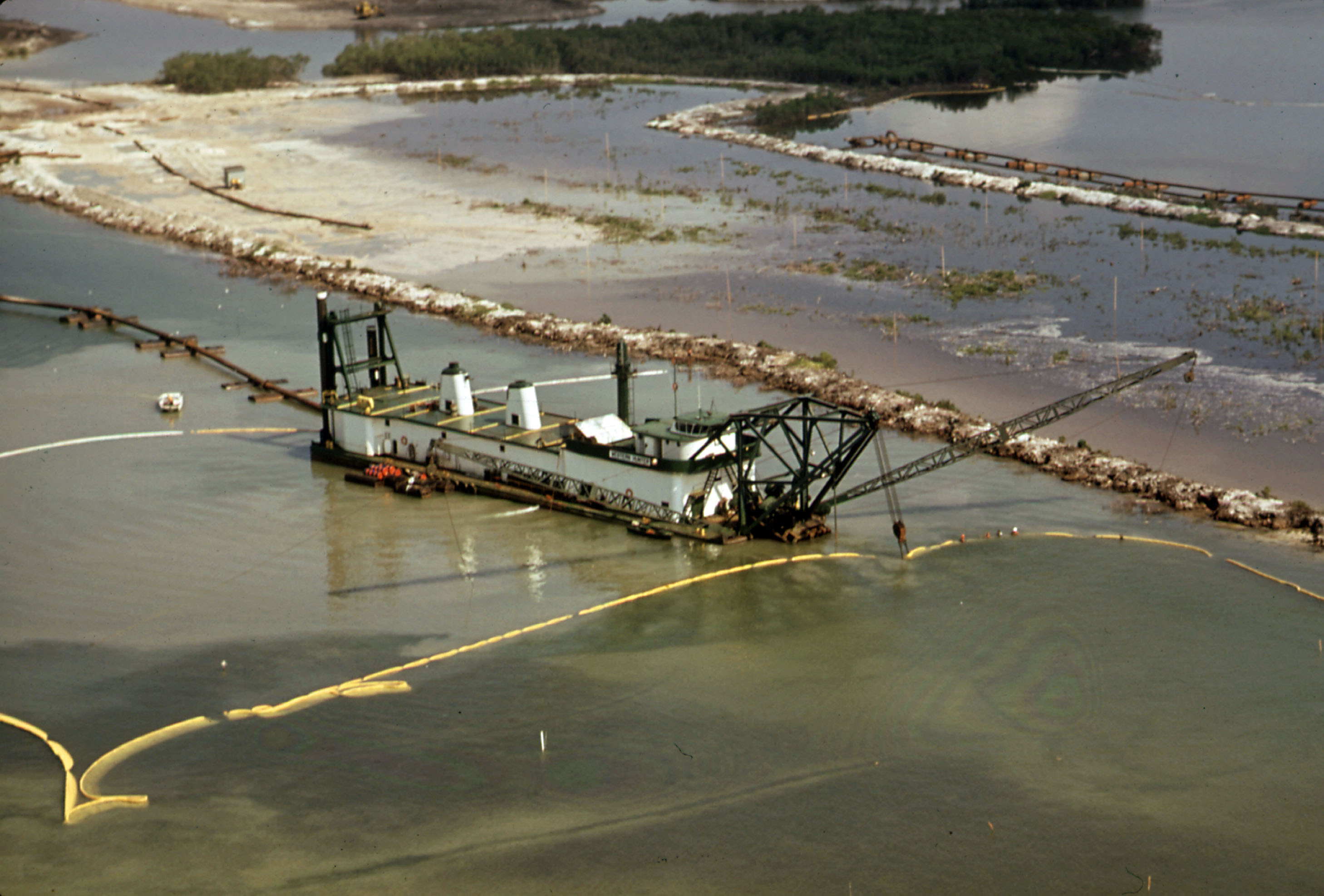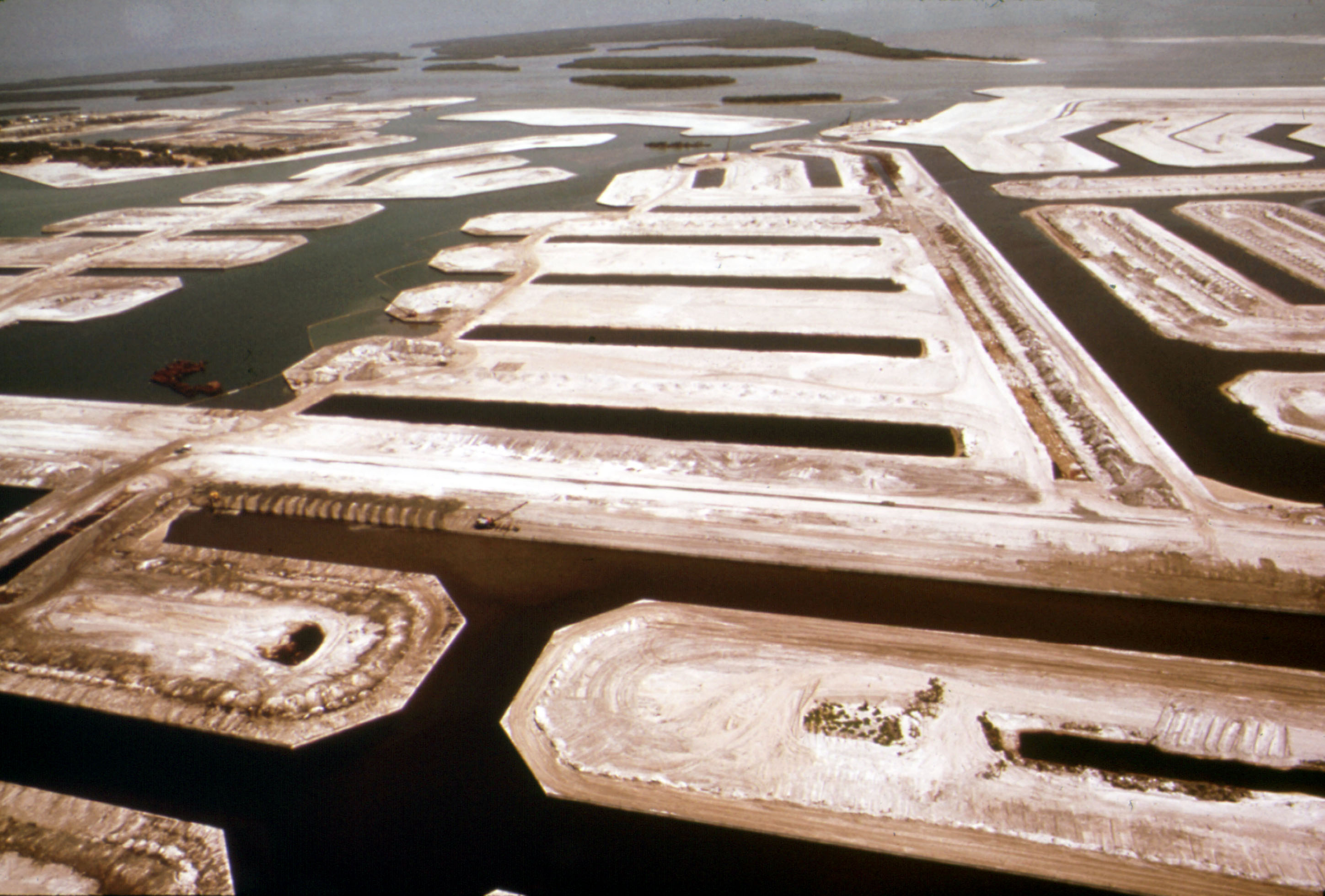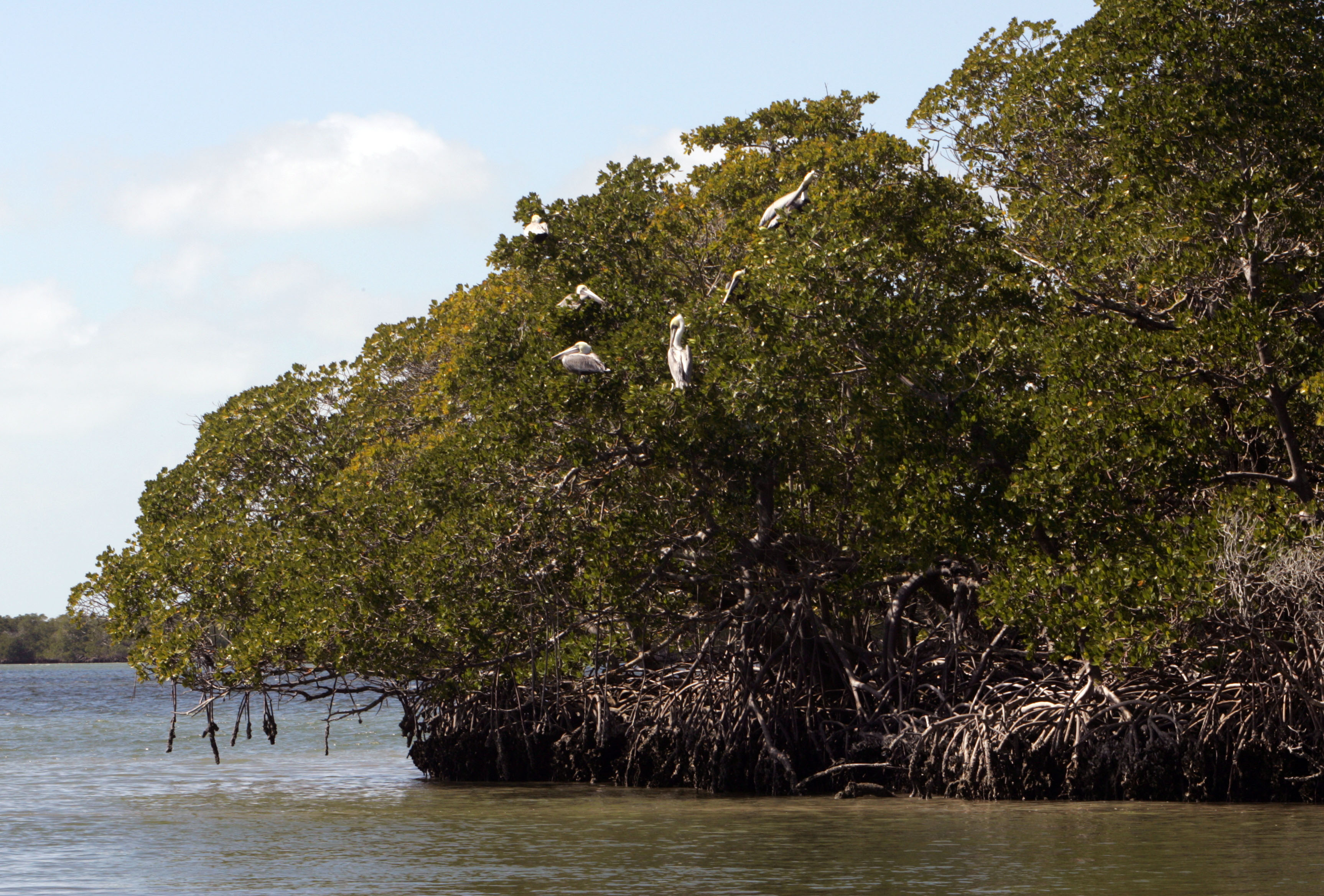The Rivers and Harbors Act of 1899 authorized the U.S. Army Corps of Engineers (USACE) to control pollution that might impede navigation on the country’s waterways. But it was not until passage of the Federal Water Pollution Control Act Amendments of 1972 (popularly known as the Clean Water Act) that USACE also had to consider factors other than navigation, such as ecological impacts, while regulating wetlands and rivers where there was very little waterborne traffic. At the dawn of the new permitting program under Section 404 of the 1972 act, which occurred during an era of growing environmental concern that had only just begun to transform USACE, skeptical activist organizations wondered if the heretofore development-friendly Corps of Engineers would actually deny a construction permit on environmental grounds and prove its ability to stand behind new criteria for water quality in partnership with the nascent Environmental Protection Agency.
| |
 |
| |
The kind of coastal development at Marco Island that became incompatible with the requirements of the Clean Water Act. Deltona Corporation’s development of mangrove wetlands involved dredging channels and filling in new areas to create reclaimed land for homes, 1972. National Archives 544643 |
In 1976, USACE became embroiled in controversy when it refused to issue a dredge and fill permit for a massive development project on Marco Island in southwest Florida in an area of wetlands off the coast of Naples. A decade earlier the Deltona Corporation had received state and county approval of a master plan to build thousands of housing units on the island. During the late 1960s, it had successfully developed several inland areas, and now Deltona looked to build new subdivisions they had planned for wetland areas of tidal mangrove forest. Many of the waterfront lots Deltona had sold in those areas were literally underwater, but the developer planned to convert them to dry land by dredging out channels and using the sand and mud to raise up areas alongside them. Although in the past USACE had approved certain dredge-and-fill permits in conjunction with the project, now the agency dramatically changed course after completing an Environmental Impact Statement. The evaluation concluded that the new subdivisions would destroy too great a portion of the mangrove wetlands that had once covered Marco Island and thereby cause irreparable impacts on the coastal environment and water quality.
While the Marco Island decision greatly frustrated the developer and left questions about how the buyers of the unbuildable lots would be compensated, it marked a turning point in the regulation of development in wetlands. Courts later confirmed that the environmental damage far outweighed any benefits that housing would have provided and that USACE was acting in the public interest. Despite Deltona’s contention that USACE’s refusal to issue permits was “arbitrary and capricious,” the court ruled that the agency had jurisdiction over the matter under authority of the Rivers and Harbors Act and the Clean Water Act and had appropriately considered the ecology of the area to make its decision. The State of Florida denied permits to Deltona on similar grounds in 1977. Those planning future housing developments in coastal wildlife habitats would now have to consider their impacts to wetland ecosystems and make mitigation plans accordingly, ushering in a more collaborative era with industry in partnership with USACE and EPA.
In 1982, the drawn-out dispute reached an “amicable” resolution. Deltona traded 15,000 acres of mangrove wetlands to the state (to be placed in a wildlife sanctuary) for 160 acres of prime industrial land adjacent to Miami International Airport, which the developer would sell to finance construction on Marco Island in less environmentally sensitive areas. USACE later worked with Deltona and other developers to see the project completed. Environmental groups widely viewed the outcome a win—the first instance of USACE halting the wholesale destruction of wetlands on environmental grounds. According to the Director of Civil Works at the time, Maj. Gen. Ernest Graves, the USACE denial and subsequent hardline stance opposing development on Marco Island was based on “a conceptual decision” made at the outset of adopting the new 404 permitting program to “protect the environment against excessive development.”
 |
|
 |
| As developers filled in former wetlands, they built out a new coastline of waterfront lots. They required additional permits from the State of Florida to finally open those new channels to the ocean, 1973. National Archives 548600 |
|
Brown pelicans rest in mangrove trees in the Ten Thousand Islands National Wildlife Refuge in southwest Florida in 2009. Marco Island is the farthest north of these islands. National Archives 166700942 |
* * *
October 2022. No. 156.